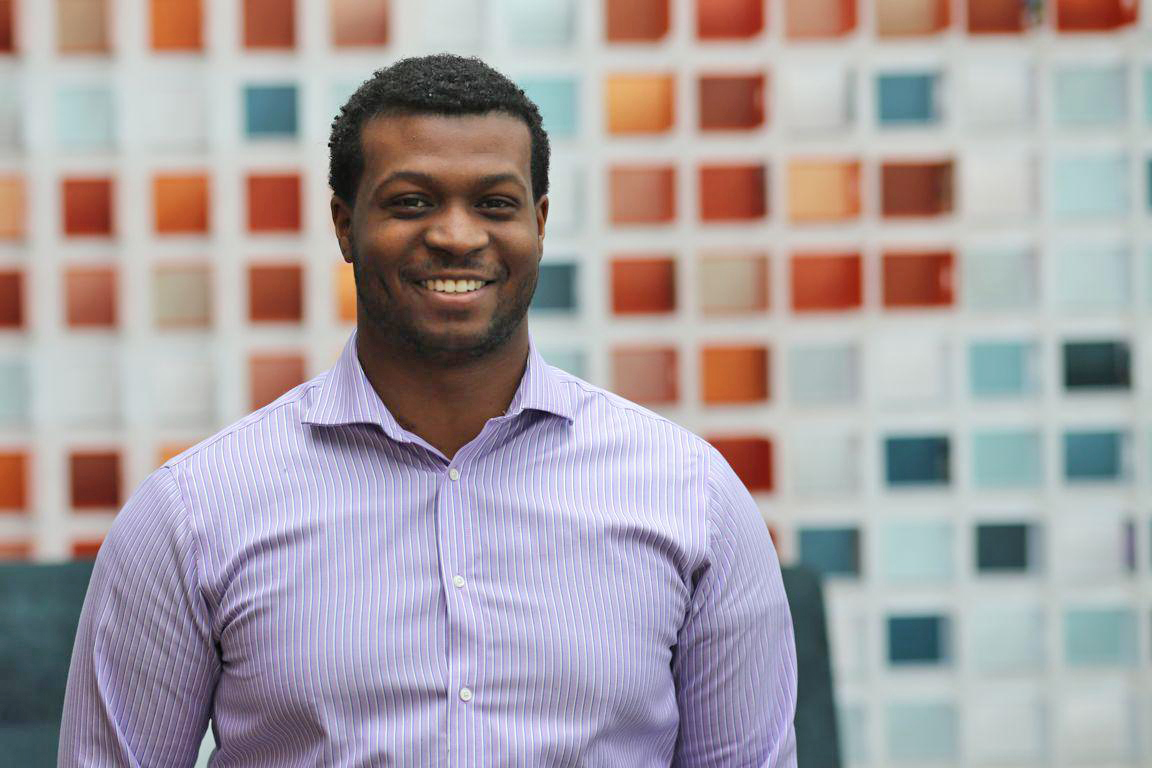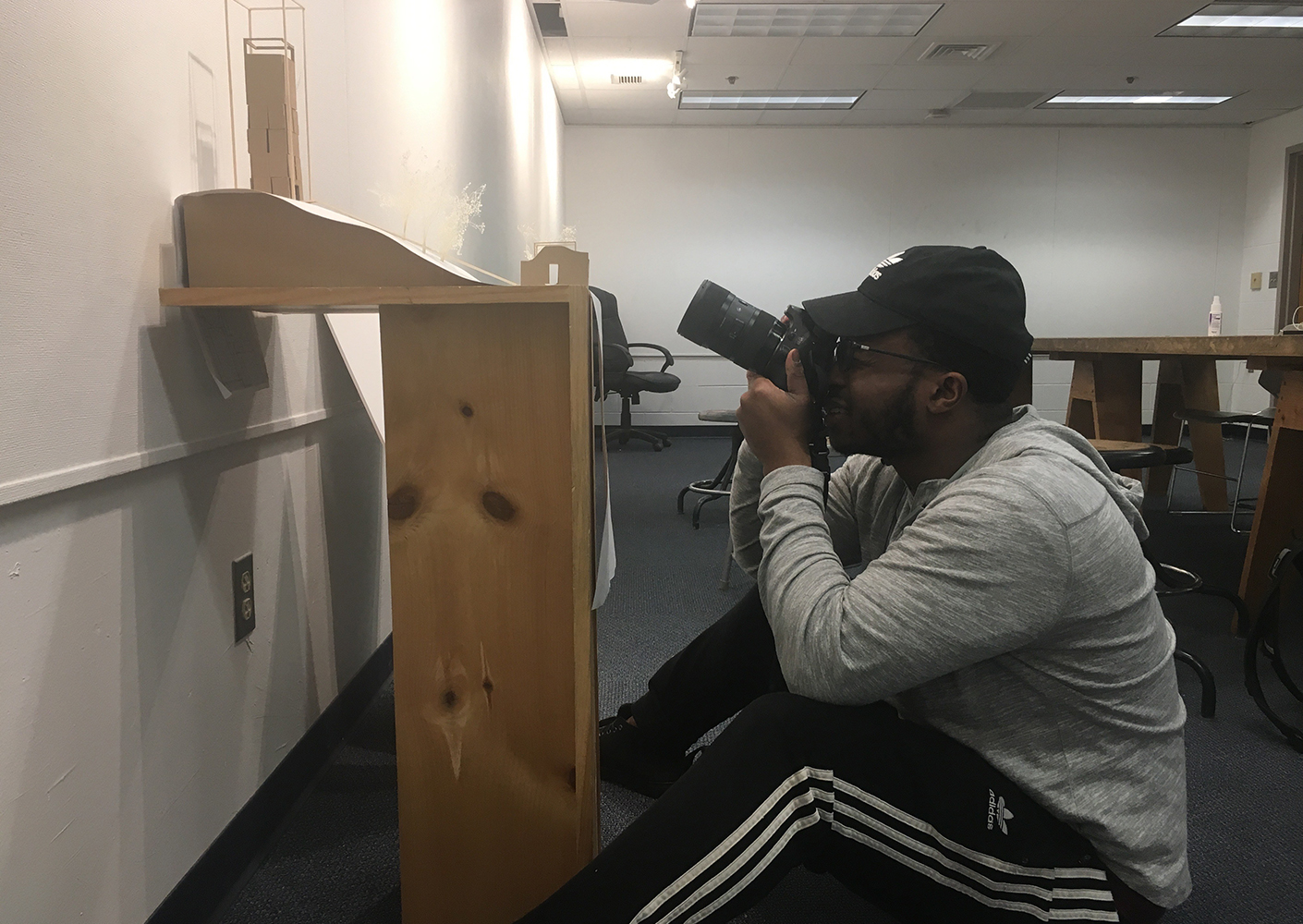Conversations with Colleagues: DeVaun Salters


A: I want people to know how design impacts their everyday lives. Everything they interact with from their toothbrush to their office is designed. If people realized how big of role design plays in their lives, they would see its influence and how powerful of a tool it can be. Well-designed buildings such as a school, library or a recreation center can bring positive influences to so many lives. The design process can bring communities together as they work with other community members as well as design teams to ensure that the best solution is brought to fruition. While a powerful tool, good design does not have to be expensive; there are cost effective ways to achieve impactful design, which means it can reach countless people.

A: I was drawn to the design profession because I thought it was a good mix between the technical and the creative. As a kid I liked math, but I also liked to draw, so it seemed like a career that would allow me to pursue both of my interests. Another thing that drew me to the profession was a conversation with a friend’s uncle who was an architect. He told me about the lack of black architects, which piqued my interest, and I wanted to help with that cause. The built environment has a huge impact on people’s day-to-day lives, so I wanted to bring another voice of the black community to the table.
What’s keeping me here is the passion for design and the impact that it can have on people’s lives. Another major driver is the desire to help fill the void of black architects in the practice, as well as the responsibility to be a representation for the black community in the design field. Along with being a representative, I want to inspire other people of color to become designers so that our voice in the field becomes larger and incites change. Just as I was inspired by a black architect to pursue this career, I want to be the same inspiration for others.

A: I think that the impacts of diversity, inclusion, and engagement are felt in two ways: by the professionals themselves, and also by the communities that are impacted by design. The lack of diversity in regard to black design professionals creates a pressure to succeed. To be honest, this pressure is not limited to design, as this is a common feeling among black professionals. Subconsciously, you are a representation of your people. Your interactions with a client, or even a coworker, could be one of the few times they interact a with a black professional. However, on the flip side there is a joy that comes along with being a representative; it feels like you are giving your people a voice and a seat at the table. It also provides the ability to be an inspiration to the next generation of black designers.
In terms of the communities, I think having someone that is relatable on the design team is extremely valuable. It can break down the barriers and help initiate a level of comfort and trust between the community and the design team. Diversity also helps in providing new perspectives, and therefore both of these factors become vital for a project, particularly for those that will serve a diverse crowd. The spaces we create are used by people of all shapes and sizes, and while unrealistic to have every demographic represented in a design team, the more diverse the team, the more likely it is to produce a product that is engaging and relatable to all users. This is not to say that people outside of a community cannot relate at all, but there is something different about having someone that has that firsthand experience. There is an ease of being able to understand the people’s wants and needs.
A: A big thing that will help spread professional design opportunities is to expose kids to architecture and other realms of the design field at an early age. Part of the lack of black design professionals is due to the lack of candidates. I was lucky to have friends with architects as relatives, so I knew that this was a career path option. But for many young black kids, I think this profession is not something that they are aware of, or society has told them that they are not good enough or smart enough to go into a design profession. If kids are exposed to architecture at younger age, they will be more likely to view design as a realistic option, particularly if they see designers that look like them. There is something about seeing someone who looks like you and talks like you doing something that makes it seem more achievable. I remember when I met my friend’s uncle, and his discussion about the difficulty of architecture school. But let me know that I could do it. I remember walking away with a feeling of excitement, that I could really do this. It was not even a long conversation, but the impact was substantial. It goes to show how a few words can go a long way to influence youth. Having black design professionals go into career days and putting on events, or facilitating mentorship programs to engage with black youth is key to boosting interest in design, and subsequently the number of professionals in the field. Meeting someone relatable and building a relationship can have a lasting influence, even if they do not decide to move forward as a design professional.